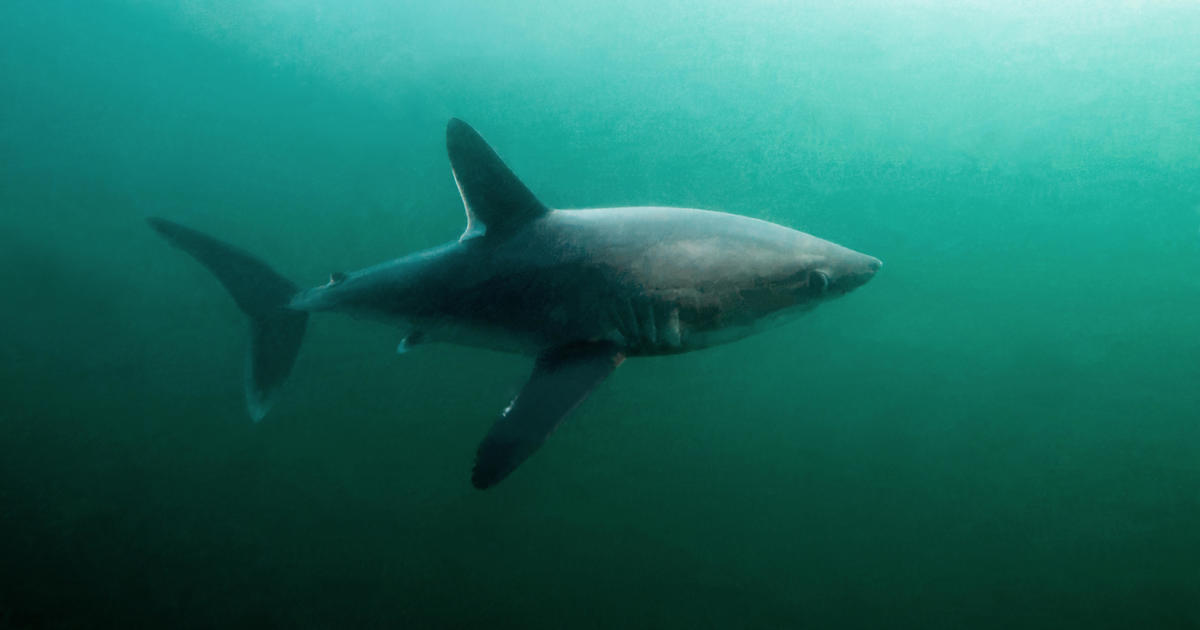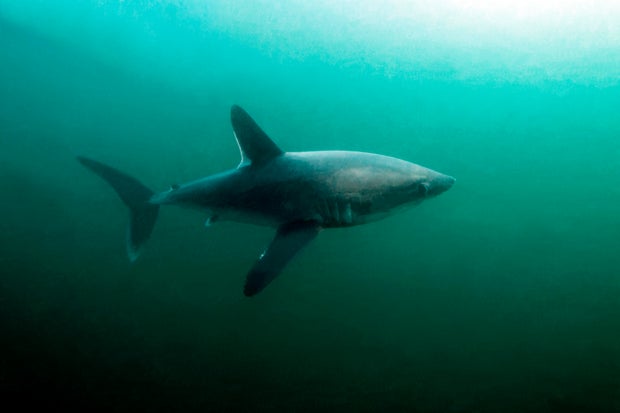In the ocean food chain, large sharks generally only have to worry about keeping orcas at bay — but a new study suggests the apex predators may have to watch out for their own.
Researchers have discovered evidence pointing to the first known case of a porbeagle shark — which can grow up to 12 feet long and 500 pounds — being killed by a large shark predator. The findings were published Tuesday in the biology journal Frontiers in Marine Science.
This isn’t the first case of “shark cannibalism.” Jon Dodd, executive director of the Atlantic Shark Institute, which helped lead the study, said larger sharks eating smaller sharks is a common occurrence. “In the open ocean, size matters, but there is always something bigger,” he said.
In some cases — bull sharks, mako sharks and baby sand tiger sharks, for example — sharks will even eat their own species.
But cases of large sharks eating other large sharks, the subject of this study, are few and far between, said lead author Dr. Brooke Anderson, a marine biologist for the North Carolina Department of Environmental Quality.
The fatality of the female porbeagle raises questions about whether this incident represents a wider trend among large predators, said Anderson. “With the advancements in technology, it’s possible that this happens more frequently than we’ve just really been able to discover,” said Anderson.
The number of sharks eaten by other sharks is impossible to know, said Dodd adding, “but if our experiences at the Atlantic Shark Institute are an indicator, it might be more than we think.”
A group of scientific researchers from across the U.S. discovered the porbeagle death while conducting a satellite tracking project in the Northwestern Atlantic to better understand the shark species’ whereabouts, behaviors and environmental preferences. They were particularly curious about female porbeagles, which are known to traverse long swaths of the ocean to deliver their pups.
“We were really seeking to understand the habitats used by the pregnant females and try to figure out where they might be going to give birth,” said Anderson.
The victim of the attack, nicknamed Penelope by researchers, was one of the 11 sharks scientists tagged off the coast of Cape Cod in 2020 and 2022. Tracking tags were placed on the dorsal fins of the sharks and used to collect information on water depth and temperature. The tags stored the data until they eventually fell off the sharks, at which point the data was transmitted back to the researchers via satellite.
Gerard Soury / Getty Images
The tracking devices were designed to stay on for a year, but five months into the experiment, Penelope’s data had already come in. “As soon as I got the data from that tag, I immediately knew something weird had happened,” Anderson said.
A few days before Penelope’s tag popped off along the coast of Bermuda, the temperature of the water suddenly spiked. It remained relatively high, even when it reached 600 meters below sea level, which is “very unusual,” Anderson explained.
Anderson and her colleagues came to a harrowing conclusion: the porbeagle had been hunted and eaten by another behemoth of the sea. “The only explanation for that data is that this tab is now in the stomach of a predator,” Anderson told CBS News.
Researchers don’t know with 100% certainty what the culprit was, but the diving pattern of the predator, which researchers tracked by looking at the depth data collected by the tag, was similar to that of white sharks they’ve monitored in the past. “Based on that, it was likely, I’d guess, a mature female white shark,” said Anderson.
Porbeagles, which have historically been overfished, are considered endangered in certain parts of the world. Given they are already at risk, Anderson said the loss of pregnant females and their babies could prove devastating to the population.
And sharks aren’t the only ones that could feel the ripple effects of this change. The rulers of the deep maintain the balance of the underwater ecosystem by keeping smaller predator populations in check and adding vital nutrients to shallow waters.
“Humans heavily rely on oceans for food and many other things and the oceans need healthy shark populations,” Anderson said.

